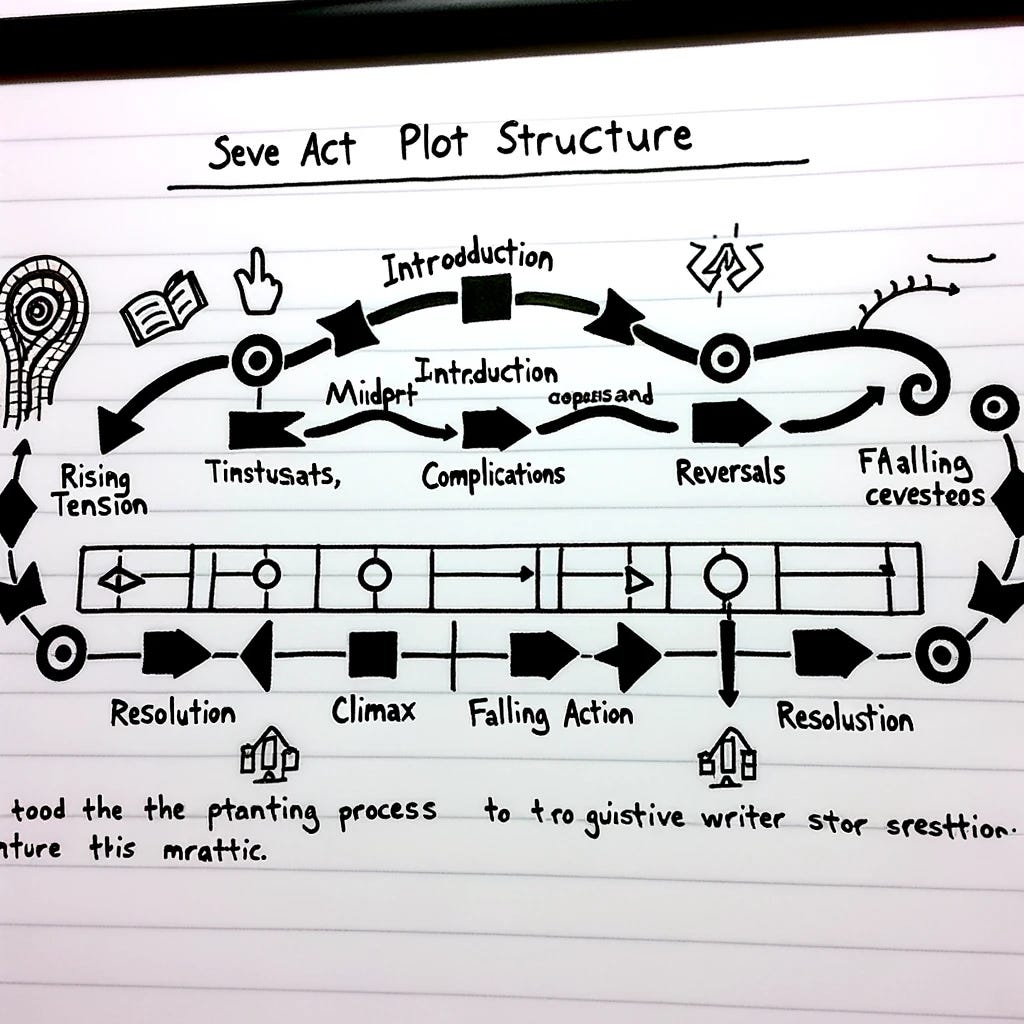Seven Act Storytelling
Blending Planning & Pantsing
I've always used a form of seven-act planning. Seven acts divided by the whole novel equates to approximately 15% per act, a suitable measuring stick for tracking pantsing progress. I haven't strictly adhered to that ratio in the past, but moving forward, with the idea of pantsing in mind, I will adhere more closely to it.
I do not like slow or long resolutions in novels, so I’ve modified the standard Seven Act approach to a more desirable construction. This entire post is for my notes; you may modify the structure to best suit your taste.
I used to create a “card” or a bullet point for every chapter, but I will no longer do that. Instead, I will create three bullet points for each Act: an opening, middle, and ending. This will give me a set of goals that I can pantsing toward.
Here is my newly modified
Seven Act Plot Structure.
Act 1: Introduction and Setup (15%)
Opening: Introduce readers to the main characters, setting, and initial conflict. Establish the tone, mood, and narrative voice.
Middle: Lay the groundwork for future events and raise the stakes.
Ending: Set up the inciting incident that will propel the story forward.
Act 2: Rising Tension (30%)
Opening: Escalate the central conflict and introduce new obstacles or challenges.
Middle: Force characters to make decisions that will shape the course of the story.
Ending: Raise the tension and create a sense of urgency.
Act 3: Complications and Reversals (45%)
Opening: Introduce unexpected twists and complications that disrupt the characters' goals.
Middle: Shift the balance of power and force characters to adapt to new circumstances.
Ending: Increase the stakes and build towards the midpoint crisis.
Act 4: Midpoint Crisis (60%)
Opening: Introduce a significant turning point or crisis that forces characters to confront their deepest fears or flaws.
Middle: Propel the story forward and set the stage for the climax.
Ending: Create a sense of uncertainty and raise the dramatic tension.
Act 5: Climax (75%)
Opening: Build towards the climax and the ultimate confrontation or challenge.
Middle: Reach the climax and the pivotal moment that determines the story's outcome.
Ending: Resolve the central conflict and set up the falling action.
Act 6: Falling Action (90%)
Opening: Subside the tension and begin tying up loose ends.
Middle: Resolve subplots and allow characters to come to terms with the consequences of their actions.
Ending: Prepare for the final resolution and conclusion.
Act 7: Resolution and Conclusion (100%)
Opening: Provide a sense of closure and bring the narrative arc to a satisfying close.
Middle: Reinforce the themes and motifs of the story.
Ending: Offer a fulfilling resolution that leaves readers with a sense of completion.


